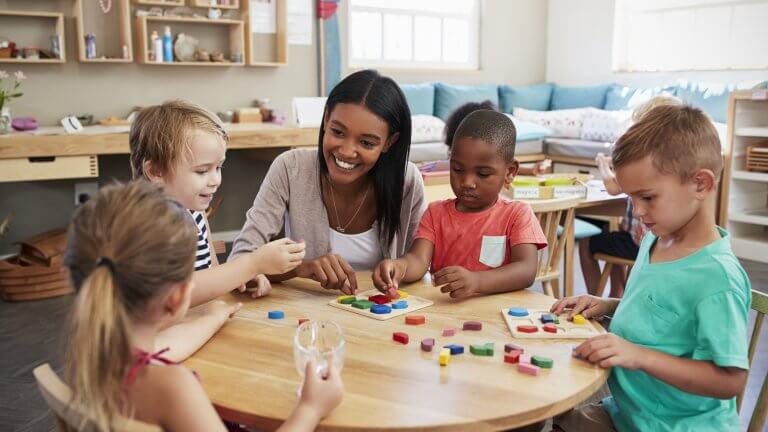Every classroom type is different and every classroom requires a unique approach to organization. However most classroom organization guides are targeted towards elementary, middle, or high school classrooms. When it comes to organizing preschool classrooms, things work a little bit differently. Here are three tips you can use to organize your preschool classroom:
- Reduce visual clutter
- Create natural boundaries when possible
- Have a visual system
Reduce Visual Clutter
Visual clutter can be particularly distracting for preschool classrooms so it’s important to ensure everything has its place. Start organizing your classroom by first planning where each thing will go.
Next, once you’ve found a home for all your things, label these with words and pictures so your students have a visual cue of where to put things away. This acts like a bonus during cleanup time by making the whole process faster and more efficient. Additionally, by asking your students to match objects to visual or text cues, you’re fostering independence and reinforcing their foundational matching skills!
Use your students’ pictures to let them know where to hang their backpack, and where to sit for snack and circle! Checkout our video “Responding to Behavior: High Quality Supportive Environments Make A Difference” for more info on reducing visual clutter and creating a supportive environment.
Create natural boundaries when possible
The clearer you can make things for your students the easier it will be for them to follow the rules. A crucial part of organizing preschool classrooms is using natural boundaries like furniture or rugs to create centers and group areas for your students.
Use colored tape to teach other concepts such as where to “line up,” where to wait at the sink, where a center ends (toys stay in the center after all) and personal space at your group table. Place developmentally appropriate toys and educational materials in each center, and explicitly teach your students how to use each learning center.
Have a visual system
Begin with a daily schedule at the students’ eye level that uses pictures to show each activity in the order they will happen. Make it interactive: when the activity is finished, they can turn it over or place the picture in a “finished” bin. Using a consistent routine will lower overall anxiety for your students by letting them know explicitly what happens next.
You can also use docking stations posted outside of individual centers to help students transition smoothly between activities and communicate when a center is full. For example, if a center has space for 4 children, there would be 4 spaces available for either student photos, or matching center icons to be “docked.”
If all 4 spaces are covered, then students know that the center is full. Additionally, if a center is closed, or you want to reduce the number of students who can go into a center, a stop sign visual or the universal no symbol can be placed on the docking station.
Learn more great tips for setting up your preschool classroom at our next classroom FUNdamentals workshop.
Maryteresa Tracy is an Early Childhood Special Education Specialist working at the Education Service Center Region 13





Add comment